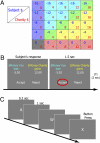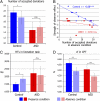Insensitivity to social reputation in autism
- PMID: 21987799
- PMCID: PMC3198313
- DOI: 10.1073/pnas.1107038108
Insensitivity to social reputation in autism
Abstract
People act more prosocially when they know they are watched by others, an everyday observation borne out by studies from behavioral economics, social psychology, and cognitive neuroscience. This effect is thought to be mediated by the incentive to improve one's social reputation, a specific and possibly uniquely human motivation that depends on our ability to represent what other people think of us. Here we tested the hypothesis that social reputation effects are selectively impaired in autism, a developmental disorder characterized in part by impairments in reciprocal social interactions but whose underlying cognitive causes remain elusive. When asked to make real charitable donations in the presence or absence of an observer, matched healthy controls donated significantly more in the observer's presence than absence, replicating prior work. By contrast, people with high-functioning autism were not influenced by the presence of an observer at all in this task. However, both groups performed significantly better on a continuous performance task in the presence of an observer, suggesting intact general social facilitation in autism. The results argue that people with autism lack the ability to take into consideration what others think of them and provide further support for specialized neural systems mediating the effects of social reputation.
Conflict of interest statement
The authors declare no conflict of interest.
Figures



References
-
- Leary MR, Kowalski RM. Impression management: A literature review and two-component model. Psychol Bull. 1990;107:34–47.
-
- Camerer CF. Behavioral Game Theory: Experiments in Strategic Interaction. Princeton: Princeton Univ Press; 2003.
-
- Bereczkei T, Birkas B, Kerekes Z. Public charity offer as a proximate factor of evolved reputation-building strategy: An experimental analysis of a real-life situation. Evol Hum Behav. 2007;28:277–284.
-
- Kurzban R, DeScioli P, O'Brien E. Audience effects on moralistic punishment. Evol Hum Behav. 2007;28:75–84.
-
- Satow KL. Social approval and helping. J Exp Soc Psychol. 1975;11:501–509.
Publication types
MeSH terms
Grants and funding
LinkOut - more resources
Full Text Sources

